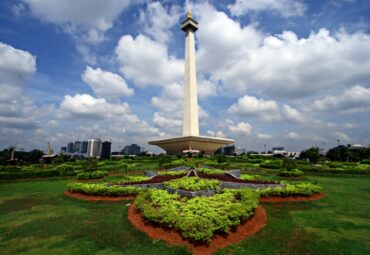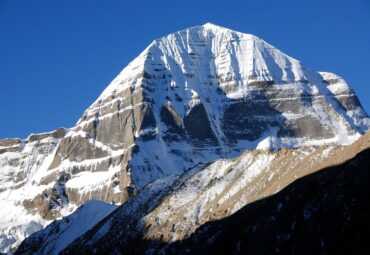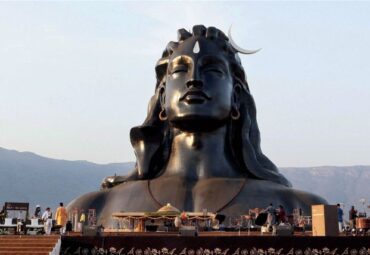5 DAYS WONDERFUL NEPAL
- Nepal
- 0 Review
- Unlimited
- Unlimited
- English speaking guide
- Entrance fees
- Food and drinks
- Sightseeing by Air Conditioned Vehicle (SIC)
- Twin sharing room
- Two way Airport Transfers
Free
Schedule
Tour Map
Reviews
5 DAYS WONDERFUL NEPAL
- Day 01 Kathmandu-Nagarkot(D)Upon arrival warm welcome to our guests, meet and greet at Kathmandu international airport then transfer to Nagarkot. This is at a height of 2300 m above sea level. Its commands a classic panorama of the Himalayan ranges. You can see from here many major peaks of the Himalayas, like Lang tang, Langtang-lirung, Chobha bhamre, Amadablam, Dorje Lhakpa, Gaurishankar and many peaks of the Himalaya, including Mount Everest on a clear day. From here you can catch excellent view of sunset and sunrise.
- Day 02 Nagarkot-Kathmandu(B/L/D)Wake up early and have a good view of the breathtaking Nagarkot, which provides an excellent scenery of the mountain ranges Lang tang, Amadablam, Dorje Lhakpa, Chobha bhamre, Manaslu etc. a lovely scenic spot, with a sun rise. After breakfast drive back to Kathmandu. Before check in to hotel visit to Pashupatinath temple. (UNESCO World heritage site in 1979) Near the holy temple of Pashupatinath is located another historic and holy temple of Goddess Guheswari. This ancient temple lies on the south-west bank of the holy river Bagmati at Devpatan. This one storied temple has got its own peculiar features which distinguish it from other pagodas and prove its historic antiquity. Pre-historic mythologies refer about of Guheswari was constructed during the reign of King Shanker dev of the Lichhavi period with the help of great tantric Narsingha Tahkur by name. Pashupatinath temple is one of the most significant Hindu temples of Lord Shiva in the world, located on the banks of the Bagmati River in the eastern part of Kathmandu, the capital of Nepal. The temple served as the seat of the national deity, Lord Pashupatinath, until Nepal, became a secular country, at least on a formal level. The temple is listed in UNESCO World Heritage Sites list. The temple is one of the 275 Paadal Petra Sthalams (Holy Abodes of Shiva on the continent). Hindus alone are allowed to enter the temple premises. Non-Hindu visitors are allowed to have a look at the temple from the other bank of Bagmati River. It is regarded as the most sacred among the temples of Lord Shiva (Pashupatinath). After Pashupatinath darshan, time to purchase Rudraksha beads for good luck (Own Expense) then proceed to hotel for check in. After lunch drive to great Stupa of Boudhanath (UNESCO World heritage site in 1979) in the Kathmandu valley, a vast dome-shaped monument representing the Mind of the Buddha is the primary pilgrimage destination for Tantric Buddhists of the Himalayas and a major draw for Tibetan Buddhists from all over the planet. The history of the stupa from its origins in the fifth century to the present day is also presented here for the first time.’ After Boudhanath temple visit to Budhanilkantha Temple Sleeping Vishnu is located at the base of the Shivapuri hill, at the northern side of the Kathmandu valley. The temple is also known as mystical Budhanilkantha temple or Narayansthan temple. ‘ Budhanilkantha’ literally means ‘ Old Blue Throat’ . The temple is dedicated to Lord Vishnu. Lord Vishnu has many incarnations. One of them is the Narayan, the creator of all life and the god who rests on cosmic sea. The 5m-long image of Vishnu as Narayan was created in the 7th century from one huge piece of stone. This image is impressive and the shrine is one of the most important Vishnu shrine in the country. It was sculpted during the Licchavi period, probably somewhere outside the valley, and laboriously dragged here. Drive back to hotel.
- Day 03 Kathmandu-Pokhara(B/L/D)After breakfast drive to domestic international airport to catch a flight to Pokhara. The dreamland of Nepal”. The moment you step into Pokhara that takes you into immediate delights are the gorgeous view of the gigantic Himalayan range and the beautiful lakes. Pokhara is a place of remarkable natural beauty. The serenity of Phewa Lake and the magnificence of the fish-tailed summit of Machhapuchhre (6,977 m) rising behind it create an ambience of peace and magic. At an elevation lower than Kathmandu, it has a much more tropical feel to it, a fact well appreciated by the beautiful diversity of flowers which prosper in its environs. Indeed, the valley surrounding Pokhara is home to thick forests, gushing rivers, emerald lakes, and of course, the world famous views of the Himalaya. After reach Pokhara drive to hotel from Pokhara airport to hotel. After reach hotel freshen up then lunch. After lunch city tour of Pokhara is in store for you which includes 1 hour boating on scenic Fewa Lake, Barahi Temple. Phewa Lake, the second largest lake in the Kingdom, is the center of all attraction in Pokhara. It is the largest and most enchanting of the three lakes that add to the resplendence of Pokhara. Here, one can sail or row a hired boat across to the water or visit the island temple in its middle. The eastern shore, popularly known as lakeside or Baidam, is the favourite home base for travellers and is where most of the hotels, restaurants and handicraft shops are located. Barahi temple is the most important monument in Pokhara; Built almost in the center of Phewa Lake, this two-storied pagoda is dedicated to the boar manifestation of Ajima, the protector’ s deity representing the female force Shakti. Devotees can be seen, especially on Saturdays, carrying male animals and fowl across the lake to be sacrificed to the deity. After the boating visit to Bindabasini Temple, Devis Fall, Gupteshwor Cave, Seti Gorge, Tibetan Refugee Camp. Drive back to hotel. After dinner or before dinner after come back from hotel, if you wish you can go on your own shopping at Lake Side.
- Day 04 Pokhara-Kathmanduby road (B/L/D)After breakfast, proceed for an excellent drive to Kathmandu. Lunch on the way. After reaching Kathmandu visit Patan Durbar Square before check inat hotel. Patan or Lalitpur is a city of fine arts. (UNESCO World heritage site in 1979) It is situated about 5 km south-east of Kathmandu, the capital of Nepal. Lalitpur is an ancient little city that is jam-packed with interesting history and heritage, epitomized by the Buddhist monuments and Hindu temples. Lalitpur attracts many tourists each year. Of all the activities available to do in Lalitpur, you will more than likely end up in a historical building, museum or temple at one time or another. Lalitpur’s museums are genuine worth the visit, when visiting one of them you can be sure to get a better understanding of the history of the Buddhism and Hinduism cultures. Some other places that draw much attention include places such as; The Patan Durbar Square is situated in the heart of the city. It is the focus of visitor’s attraction. The Square is full of ancient palaces, temples and shrines, noted for their exquisite carvings. The Patan Durbar square consists of three main chowks, the Central Mul Chowk, Sundari Chowk and Keshav Narayan Chowk. The Sundari Chowk holds in its centre a masterpiece of stone architecture, the Royal bath called Tushahity. This Square is definitely worth a visit. The Ashokan Stupas comprises of four ancient stupas popularly believed to have been built in 250 B.C. by Emperor Ahoka at the four corners of Patan. Directly north of Durbar Sq. is Kumbeshwar Temple, one of the valley’s three five-storey temples. The temple dominates the surrounding streets and is said to date from 1392, making it the oldest temple in Patan. The temple is noted for its graceful proportions and fine woodcarvings and is dedicated to Shiva, as indicated by the large Nandi, or bull, facing the temple. The temple platform has two ponds whose water is said to come straight from the holy lake at Gosainkund, a long trek north of the valley. An annual ritual bath in the Kumbeshwar Temple’s tank is claimed to be as meritorious as making the arduous walk to Gosainkund. In Patan you can visit Bagalamukhi is also called Pitambaradevi or Brahmastra Roopini and she turns each thing into its opposite. She turns speech into silence, knowledge into ignorance, power into impotence, and defeat into victory. She represents the knowledge whereby each thing must in time become its opposite. Once upon a time, a huge storm erupted over the Earth. As it threatened to destroy whole of the creation, all the gods assembled in the Saurashtra region. Goddess Bagalamukhi emerged from the ‘Haridra Sarovara’, and appeased by the prayers of the gods, calmed down the storm.
- Drive Day 05 Kathmandu-Departure(B)Breakfast at hotel. Free and easy till time for transfer to airport for your flight back home with lots of memories. Enjoy the excellent scenery of Mount Everest from your aircraft if you fly with Malaysia Airlines.
Tour Includes:
1.Accommodations 3 / 4 / 5 Star Hotel (Twin sharing).
2.Meals as per itinerary.
3.Private transportation using air-conditioned vehicle.
4.English Speaking local tour guide cum driver.
5.KTM – PKR internal air fare with taxes.
6.Nepal Visa On arrival USD 25 one passport pic.
Excludes:
1.Entrance fees to visit monuments and places of interest.
2.Travel Insurance( RM )
3.Items of personal nature viz., phone calls, Table drinks, porterage, Laundry and entrance fees, Etc.



